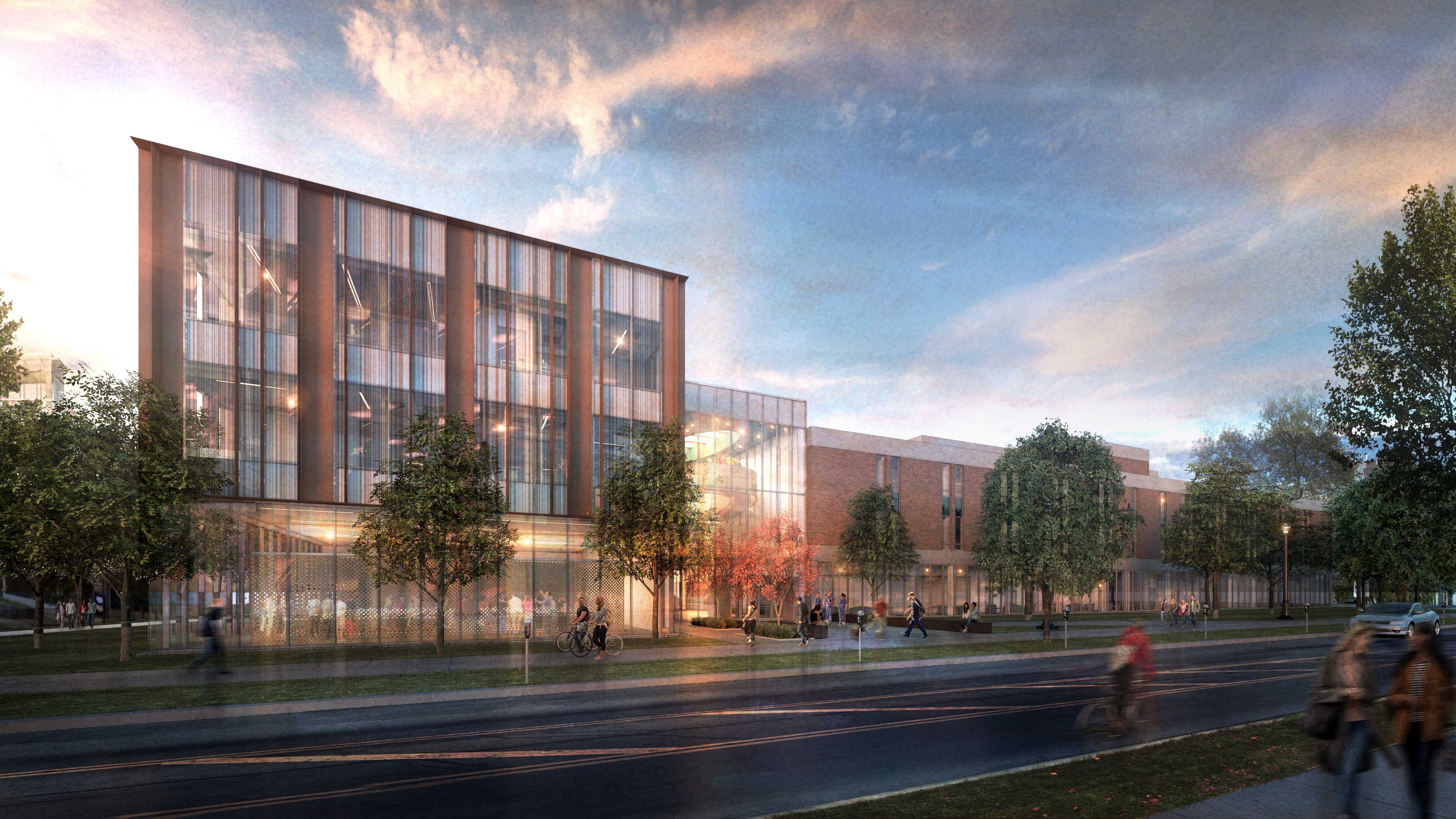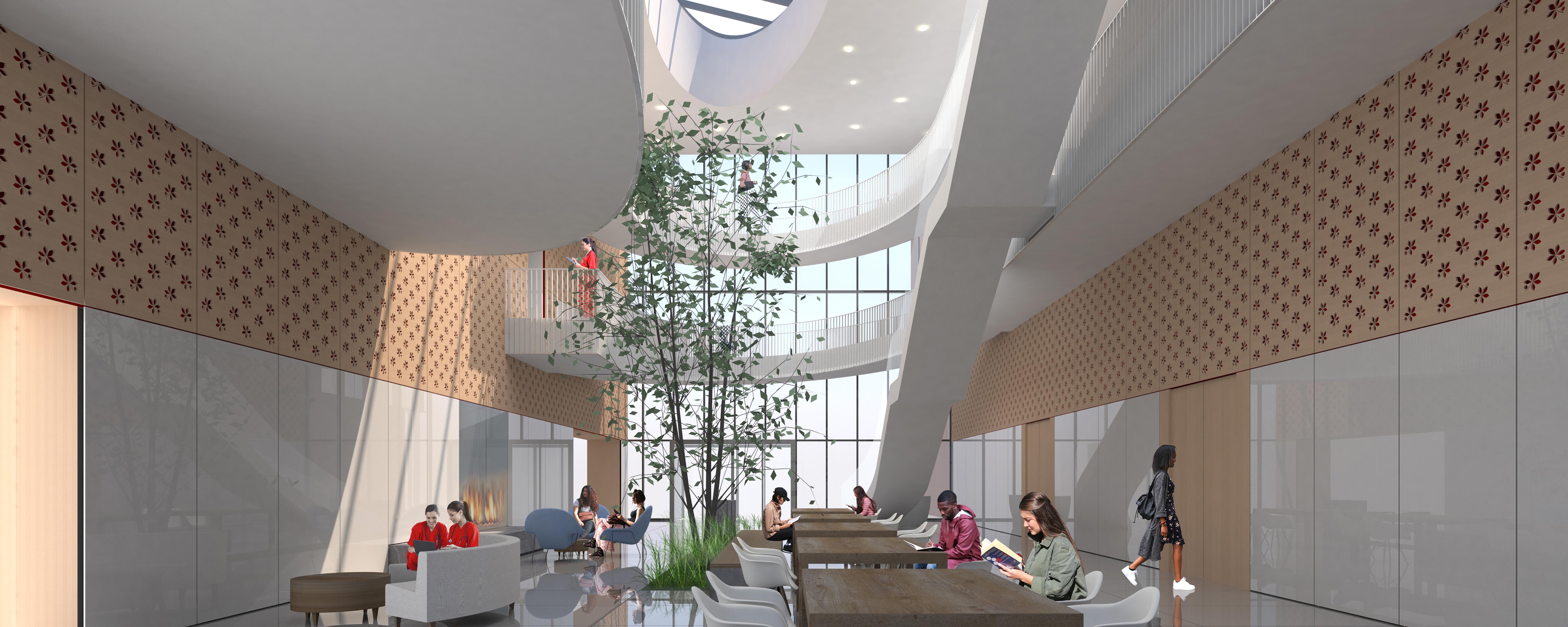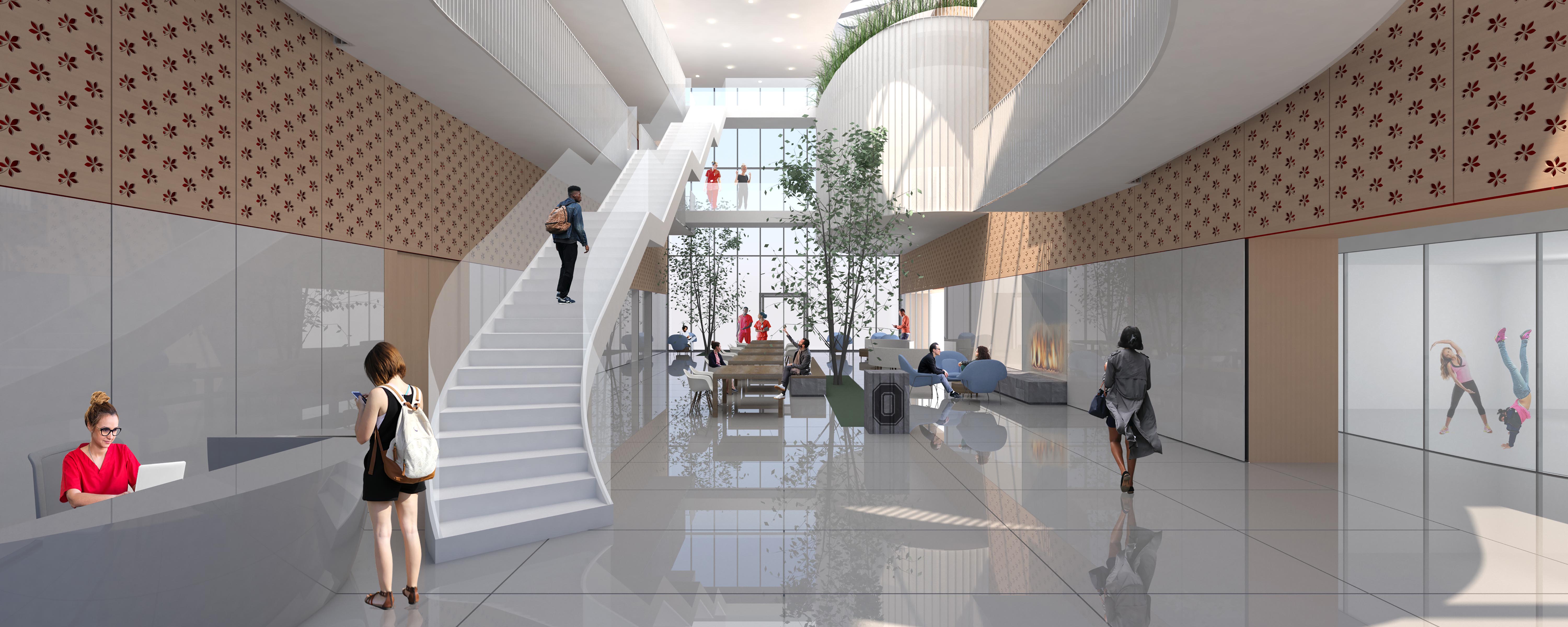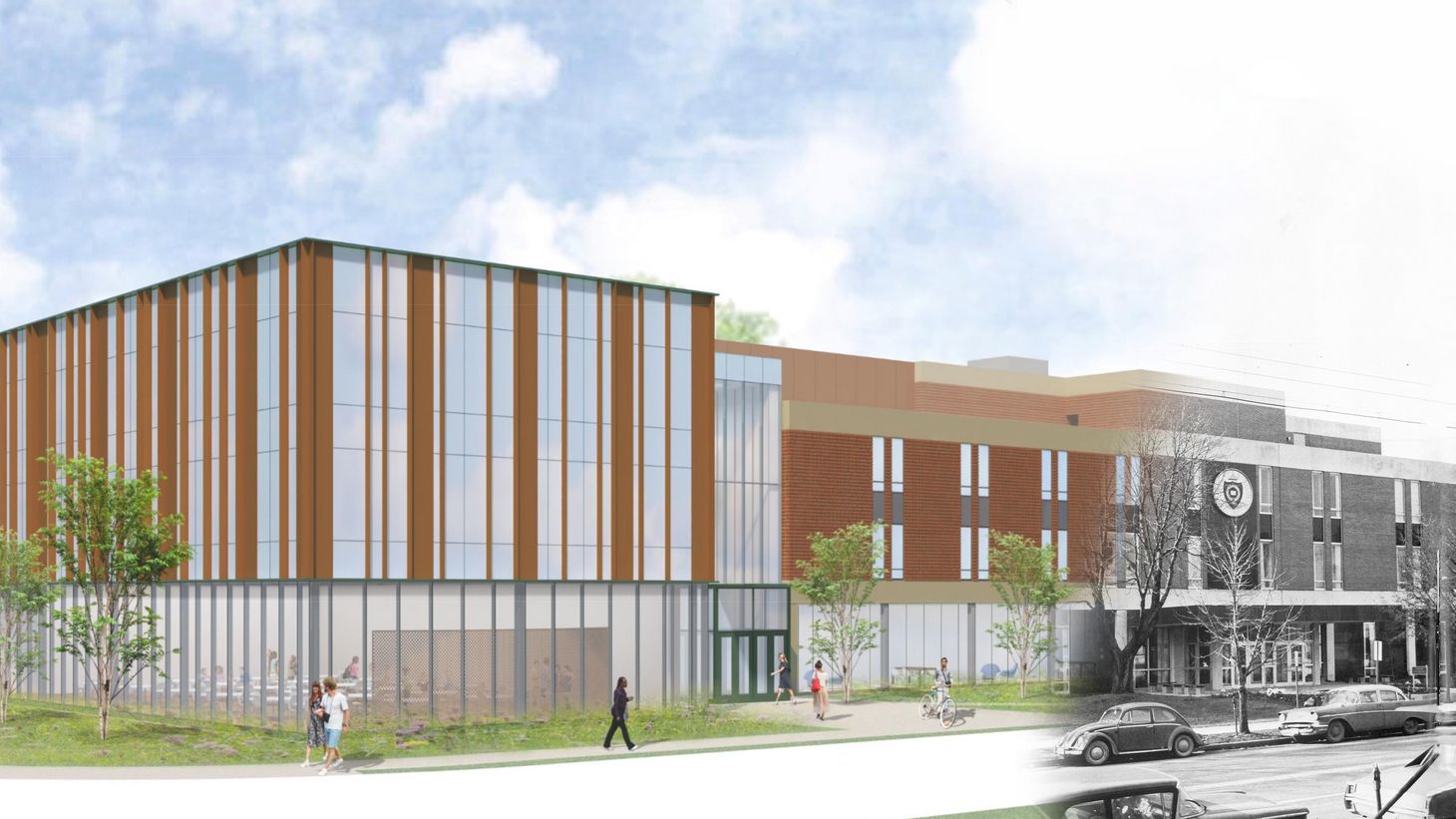
Transforming the Future of Health
by Susan Neale
Our tremendous growth during the past eight years has also brought a great challenge: We need to create a thriving new space for classrooms, meetings, faculty and staff offices, research, evidence-based practice, wellness and healthcare innovation programs. The dream of a bigger, better, updated Newton Hall began several years ago. Now, that dream is about to come true.
Buckeye architects meet signature New York firm and make magic together
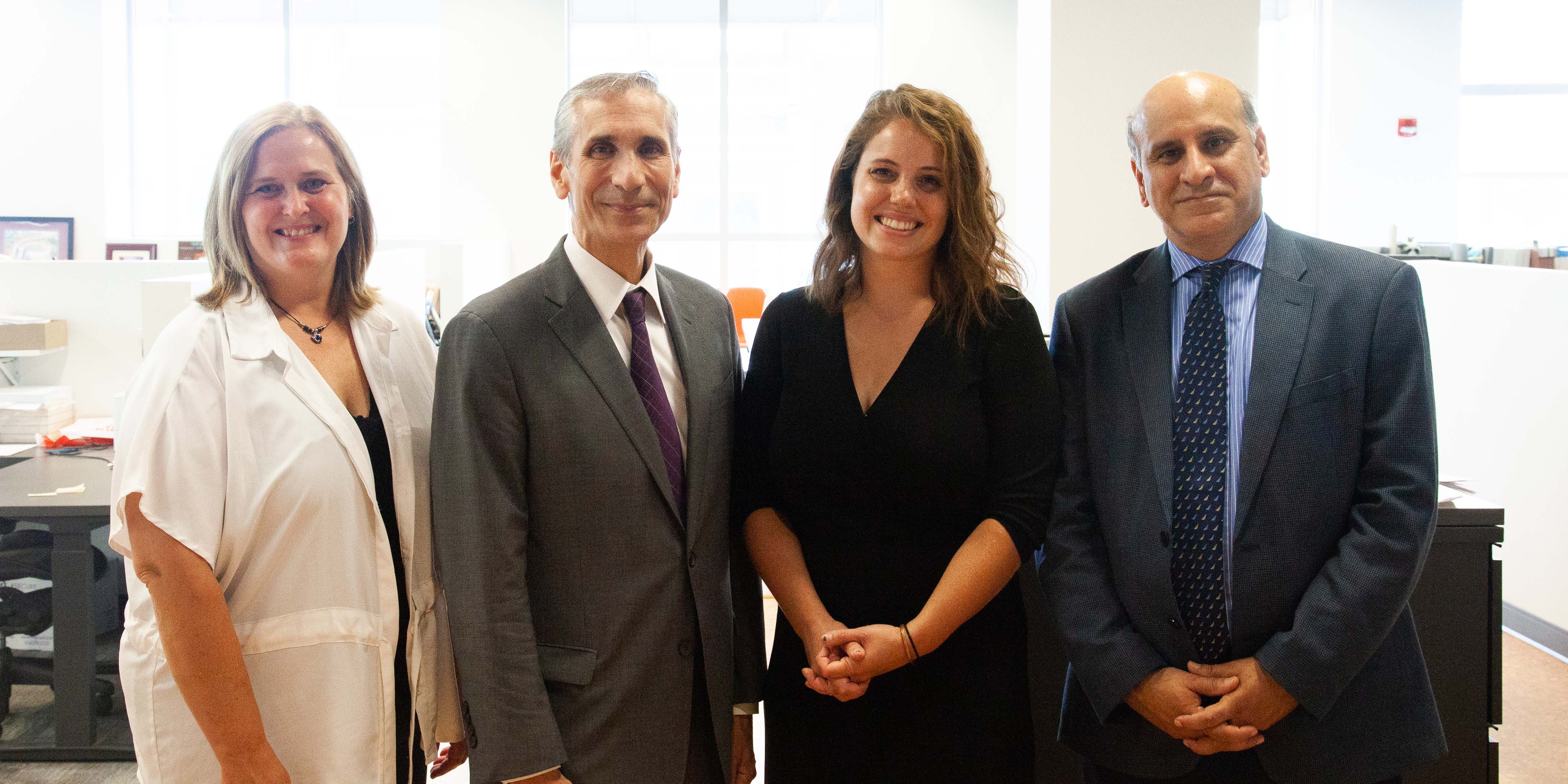
P’Elizabeth Koelker, NCARB, LEED AP, and Ken Cleaver, LEED AP, know The Ohio State University’s architecture. The two met on the first day of architecture school at Ohio State, and later worked together on Newton Hall’s lobby redesign, transforming the dark, wood-paneled space into the light-filled living room it is today. Now part of M+A Architects in Columbus, Koelker (firm principal and studio director for healthcare and higher education) and Cleaver (team lead) have worked together on nearly 100 projects for Ohio State.
College of Nursing leadership asked University Architect Bernard Constantino, FAIA, to pair M+A, which had consulted on several design studies for the new addition, with signature New York design firm ikon.5 architects, ranked as the sixth-best design firm in the United States by Architect magazine and winner of more than 75 national and international awards.
The two firms quickly developed a great working relationship. “ikon.5’s role is to create the design, with a little bit of our input from our background working with the dean and the university; we’ll finalize the construction documents and get the project delivered,” Cleaver said. Koelker added, “They’re very good listeners, as well as being very creative, collaborative and responsive – we’ve really enjoyed working with them.”
As consultants to M+A, ikon.5 is carrying the project through the design development phase, from conceptual planning and schematic design of floorplans down to specifics of building and interior finish materials. Meanwhile, as Architect of Record (legally, the firm responsible for contracting for and completing the construction), M+A has been coordinating a team of approximately a dozen local consultant designers and engineers for landscaping, geotechnical engineering, lighting, acoustics and more. M+A will finish the drawings and specifications that describe the building to the construction team, and guide its construction.
M+A’s experience with Ohio State was invaluable when it came to shepherding the project through the intense scrutiny of the university’s design review process. “The design approval process at Ohio State requires a great deal of involvement at the university level, to ensure that new buildings will seamlessly fit into the campus overall and will serve the university for decades to come,” Koelker explained. To deliver this sort of timeless design, the architecture team presented several design concepts to the university’s office of Planning, Architecture and Real Estate (PARE) and Design Review Board (DRB), refining and improving the concept. While brick is the predominant building material on campus, College of Nursing leadership, especially Dean Melnyk, pushed for and won the kind of innovative, glass-centered building for which ikon.5 is famous.
The result? Magic. And now that PARE and the DRB have given their approval, it’s moving fast: “It’s going to start in 2020, we’re hoping late spring or early summer; the earlier the better,” Cleaver said.
This landmark addition and renovation project, the biggest expansion in our college's history, will emulate our vision to be the world’s leader in thinking and doing the impossible to transform health and improve lives. It will embody wellness and innovation.
— Bernadette Melnyk
Dreaming big: a winter garden of wellness
In designing the new 40,000-square-foot addition to Newton Hall, ikon.5 Design Architect Joseph G. Tattoni, FAIA and colleagues drew inspiration from a concept from medieval art: the winter garden.
“A winter garden is a microcosm of nature, a recreation of the natural world inside,” Tattoni explained. “We’re using that as the inspiration for this building because the mission of the College of Nursing is that the holistic mind, body and spirit has to be taken into consideration in order to be healthy.”
The College of Nursing’s vision of wellness, he said, is more than just healthcare. “It’s about what you eat. It’s about what you think. It’s about how you feel about yourself. And the physical environment has a huge impact on that.”
How do we transform the environment?
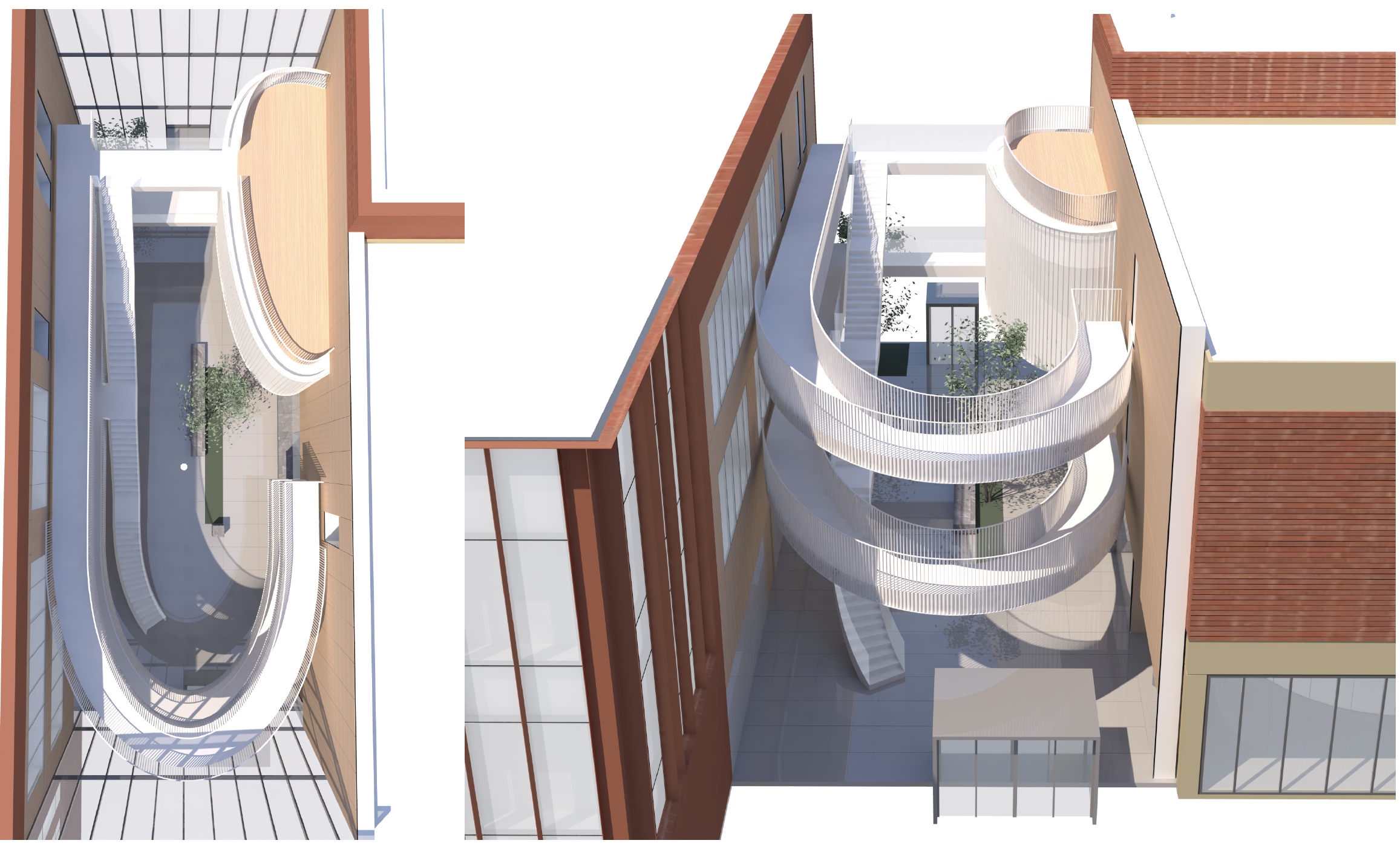 While the existing Newton Hall is, as Tattoni described, “a double-loaded corridor, your basic school design,” the challenge was to make this functional, boxy building into something that would inspire people to be conscious about wellness. “How do we transform the environment?” Tattoni’s team asked.
While the existing Newton Hall is, as Tattoni described, “a double-loaded corridor, your basic school design,” the challenge was to make this functional, boxy building into something that would inspire people to be conscious about wellness. “How do we transform the environment?” Tattoni’s team asked.
One key was to connect the building to nature using biophilic design – curving shapes that feel natural and organic. In the sky-like ceiling with lights that will mimic stars, round “oculus” skylights are designed to let in natural sunlight. The glazed pattern in the glass will filter and soften light entering the windows much like tree trunks do. Living plants and trees indoors will also help connect back to nature.
Outside, the landscape is as carefully planned as the interior. “There are layers to this landscape experience,” Tattoni explained, pointing to an architect’s drawing of the grounds and the trees, some existing, some to be newly planted. Outside of the multipurpose classroom/large event space to the south will be a white spire birch grove. “These birch trees will be all lit up at nighttime, so when you have events here at night, you look through the glass and you’re looking at the white, illuminated trunks of the birch trees. It will be beautiful.” The landscape design, from bluestone pavers and benches to plantings and trees, continues from the new entry plaza outside through the indoor atrium, and out again to the west garden terrace, blending outside and indoors.
The clear glass walls of the addition’s ground level and the renovated front façade of Newton Hall will let passersby see in to the college in a new way. “It says welcome, openness, innovation, transparency –everything the College of Nursing wants to be,” Tattoni said.
All is WELL
While every building on Ohio State’s campus must be LEED certified to be energy efficient, College of Nursing leadership wanted the new addition to be WELL certified also, to ensure its capacity to promote wellness. (See page 70 for a more detailed description). The plans have met with approval for WELLv2 Silver certification—no small feat—with measured standards for air, water, nourishment, light, movement, thermal comfort, sound, materials, mind, community and innovation.
“In order to get these certifications, both WELL and LEED, there’s specific, definable metrics that have to be met,” Tattoni explained. For instance, the percentage of floor area that is covered by sunlight through the course of the day, throughout the year, has to be measured for part of the submission to the U.S. Green Building Council.
The two certifications are not always in sync, Tattoni said. “WELL says get as much natural daylight as possible; LEED wants you to keep the heat out of the building to reduce fossil fuel consumption.” The design team, including WELL-certified architect Johnna Keller and Koelker from M+A, worked with these challenges to define and then design the addition so that it will be the first WELL-certified building on Ohio State’s campus.
Join us as we transform the future of health, visit nursing.osu.edu/building.
The plan
The new addition includes a new entrance to the College of Nursing on Neil Avenue. Pathways lead to the entry plaza, with bike racks, stone benches, trees and planters. You can see into the atrium, and beyond to the west patio terrace, where students might be sitting on benches under the trees. Once inside the high glass walls of the atrium, you can choose to go left, into the new three-story addition; to the right, into the existing Newton Hall, or all the way back and to the right, to an additional three-story block added on to the back of the existing building.
Behind Newton Hall
The space added to the back of the existing building houses a state-of-the-art demonstration kitchen on the first floor to promote healthy eating, an important part of well-being. The kitchen area will offer nutritional programming for the university by the Buckeye Wellness team, which Dean Melnyk leads as the University Chief Wellness Officer. The second floor holds offices for the Helene Fuld Health Trust National Institute for Evidence-based Practice in Nursing and Healthcare. On the third floor, two large seminar rooms can be used as classrooms or meeting areas. The relaxation loft overlooks the atrium, and a walkway extends across the atrium to the main body of the addition.
The atrium
Here is where we come together, to study, to talk, to enjoy community. Moveable desks and chairs allow students, faculty and staff to log in, recharge and collaborate together while soft light filters down through the trees from the skylights overhead. Water splashes on rocks, and a crackling fireplace glows with warmth and light.
Across the atrium
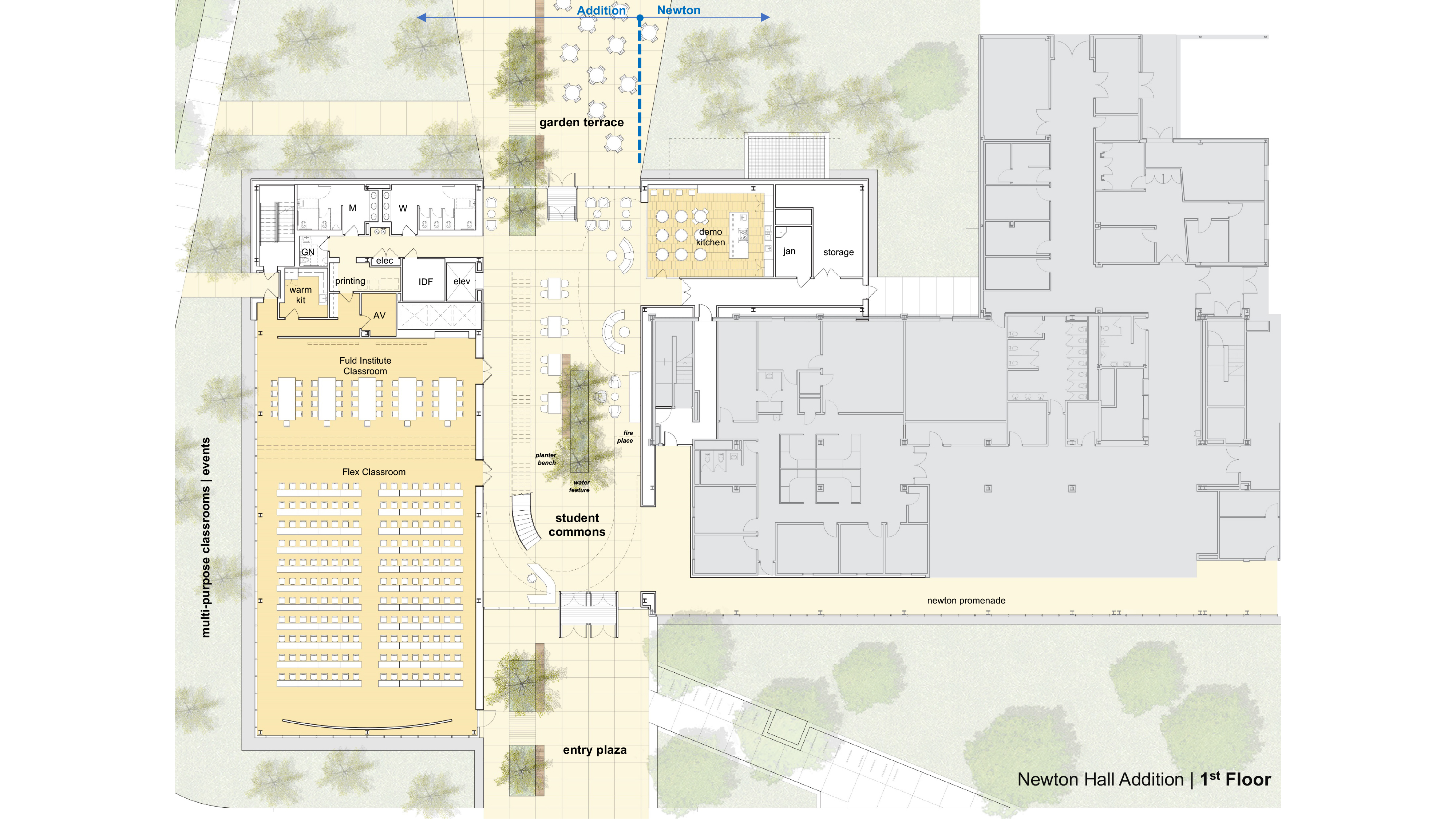
The first floor of this part of the addition houses multi-purpose classrooms, including a 176-seat “flexible classroom” suitable for large lecture classes, faculty and staff meetings, all-college events and conferences. Two of the flex classroom’s walls are floor-to-ceiling glass looking out to 9th Avenue and Neil Avenue. A retractable wall, which lowers from the ceiling, separates the large lecture space from the Fuld Institute for EBP’s 40-seat classroom and presentation area, with a warming kitchen and printing room behind the scenes.
Second floor
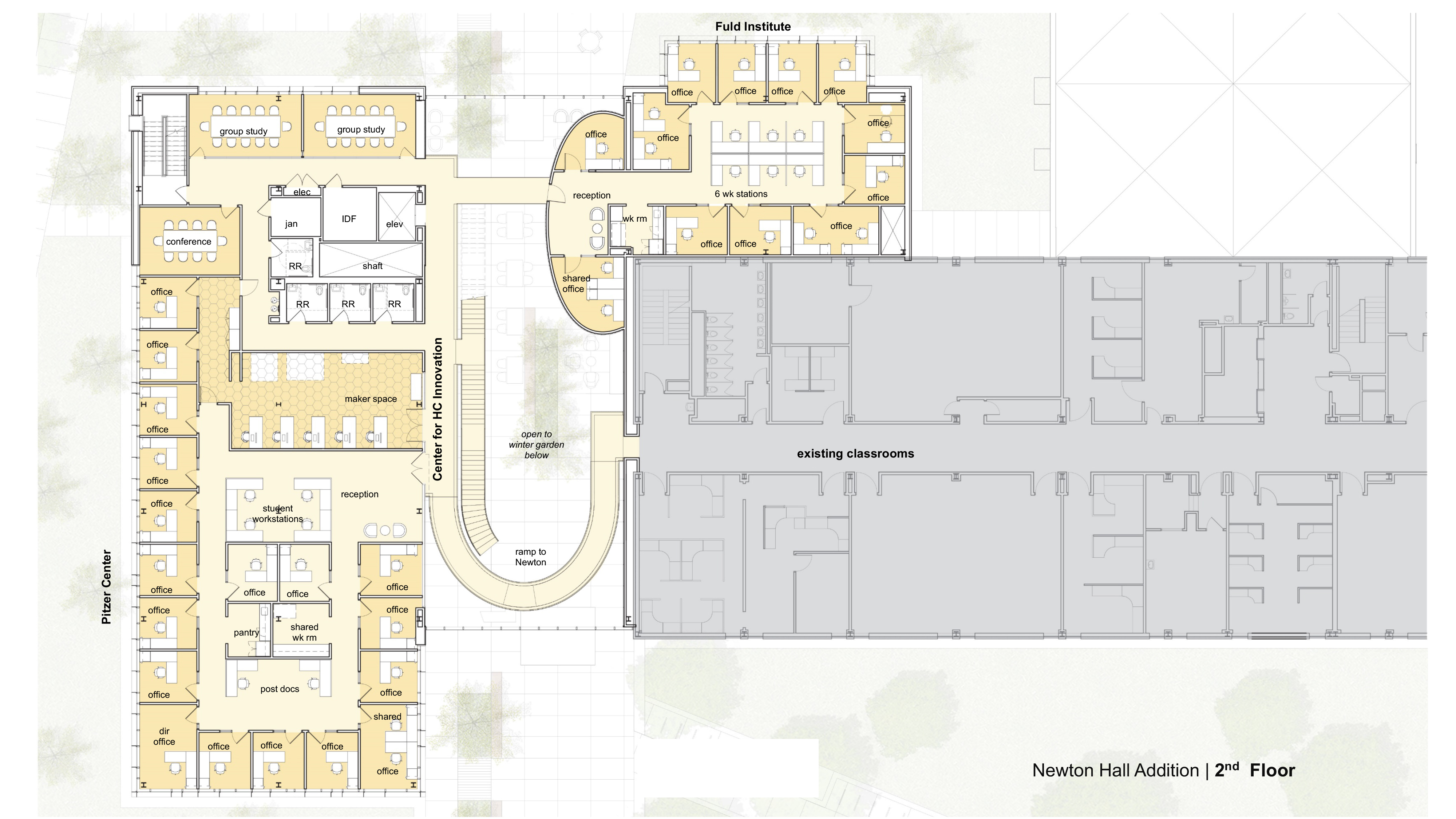
The second floor will be the new home of the Martha S. Pitzer Center for Women, Children and Youth. It also houses the Office of Healthcare Innovation and Entrepreneurship, including a large maker space. Three small conference rooms will provide much-needed meeting space for the college and break-out rooms for immersion sessions held by the Fuld Institute for EBP.
Third floor
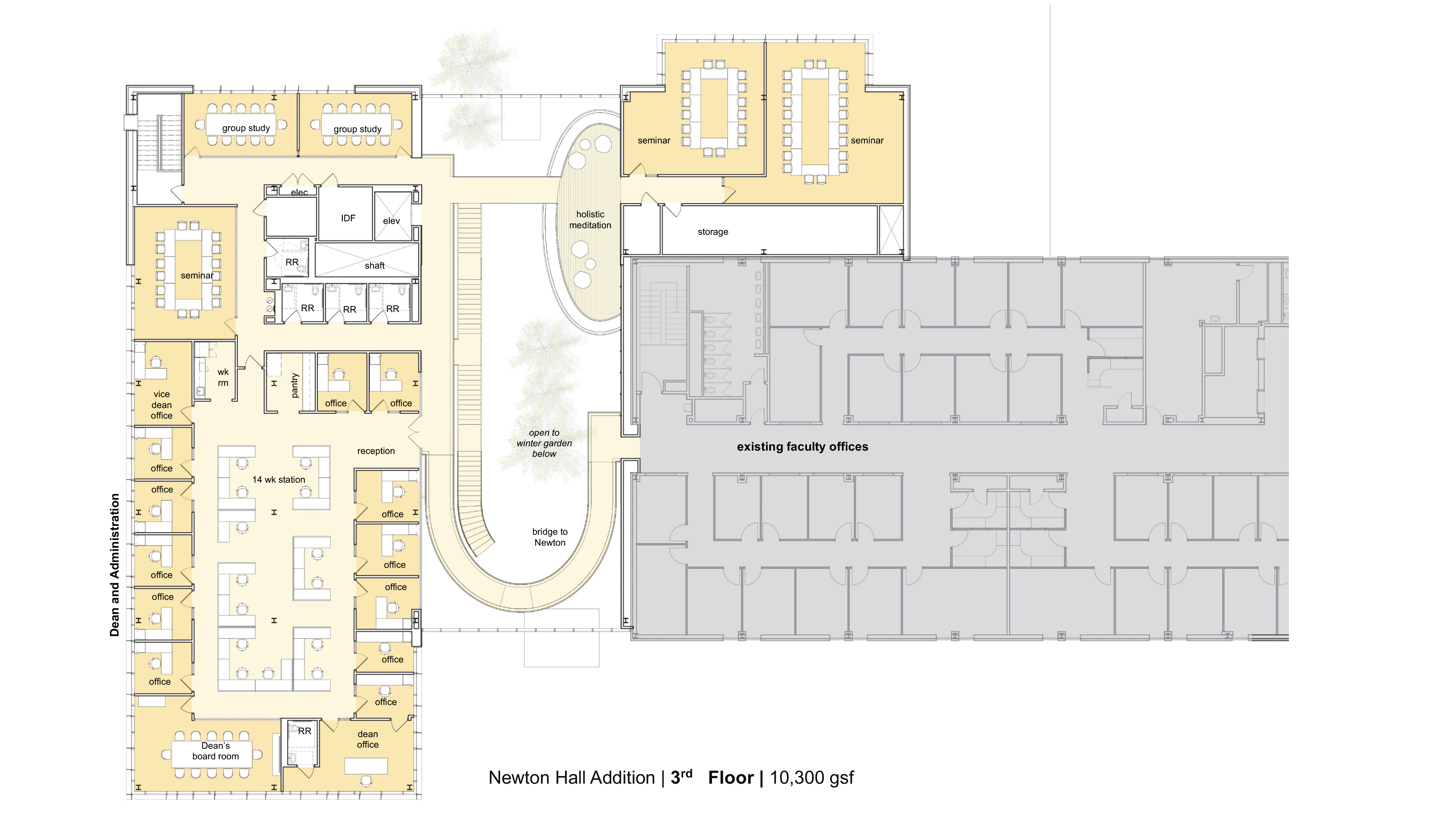
A suite of offices and work stations for the dean's team and key administrative units for the college, an executive conference room, pantry and reception area are housed here. Group study and conference rooms and a large seminar room on this floor serve several purposes for the college.
Innovation: How do you make glass energy efficient?
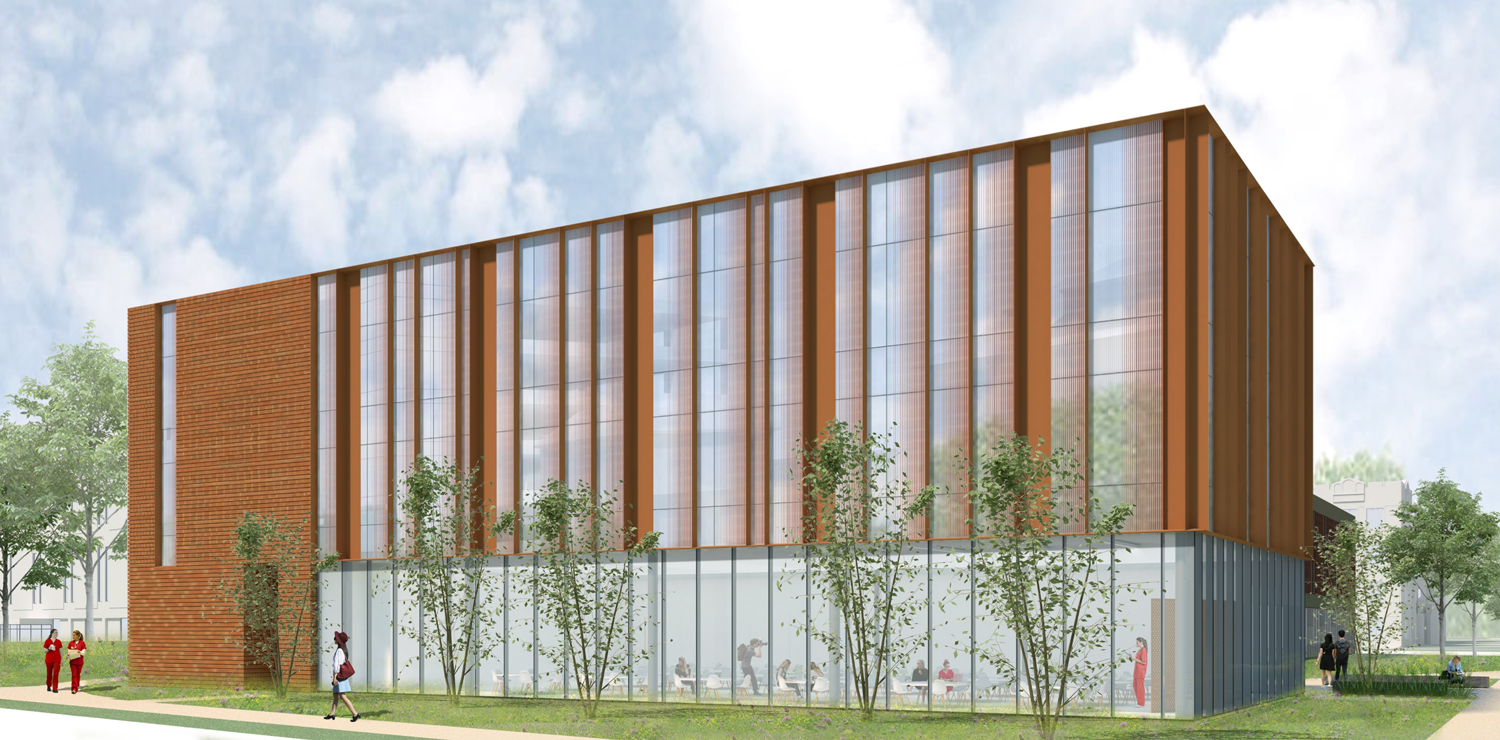
Translucent ceramic lines in varying widths added to the glass in the glazing process will create a pattern of filtered light, responsive to different angles of the sun.

